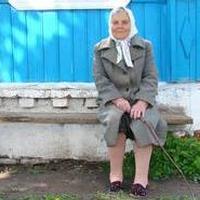Readers of an OIPA blog will know that, the process of population ageing in the developed countries has been accompanied by advances in educational attainments, professional skills, income and wealth, and health status (e.g. life expectancy at 60 years) of the elderly. Furthermore, societies have improved the ‘enabling environment’ of older people (maintaining social capital, guaranteeing medical and social care, protection against crime, provision of appropriate housing, availability of public transportation, and ability to participate in the political system). These positive developments have made it more possible for the elderly to use their capabilities to make contributions to the economy for wages, to society through volunteer work, and to their households (childcare, education) (Bussolo et al. 2015, Harper 2015).[1]
Although Russia has had a similar high share of the elderly (around 20% in 2016 versus the global average of 13%), it has had a more turbulent history over the past 100 years, with adverse changes in several periods in income, societal support, and health of the population. It also has had greater inequalities between older citizens. Given these variations, it is illuminating to study the life experiences of those in Russia turning 60 and variations in their circumstances.
I have examined these issues in a new article entitled ‘The Changing Capabilities of Cohorts of the Elderly in Russia During 1990-2020: Measurement Using a Quantitative Index’ that was published in May 2017 in The Journal of Population Ageing on an Open Access basis.[2]. The development of the article from its inception in 2012 was discussed in my OIPA blog in February 2017. [1] In brief, I followed up my earlier article on the elderly in Russia (Davis 2006) by structuring one around the different life experiences of five birth cohorts (1930, 1935, 1940, 1950 and 1960) and their capabilities when they turned/will turn 60 in 1990, 1995, 2000, 2010 and 2020.
The relative positions of these birth cohorts in the Russian age-gender population pyramid of 1989 are shown in Diagram 1:
As is evident, the numbers of women significantly exceeded those of men for those born before 1950.
The article provides detailed life stories (supplemented by descriptive tables) of the five birth cohorts as they pass through four phases: childhood, early adult, mature adult and elderly. In the first instance, this takes into account general circumstances in the USSR/Russia: politics, economy, society, health conditions, health behaviours. The stories then consider developments for each cohort over the four phases in their human capabilities (education and training, income, enabling environment, medical care, and health status). The article argues that health-related capabilities (provision of medical care and health status) are especially important in relative terms in older age.
The differences between life stories of those entering/approaching old age can be appreciated by comparing the birth years of 1930 and 1960. Those in the former group spent their initial 23 years living under the Stalin regime, which involved rapid industrialization governed by ambitious plans, forced collectivization and famine, low living standards, acute deprivations during World War II, and post-war reconstruction, famine and austerity. They lived in peace with rising living standards from the mid-1950s until the collapse of USSR in 1991. Their initial decade in the elderly status was accompanied by losses of personal savings due to hyperinflation, unemployment, and substantial declines in real health expenditures and state pensions. In contrast those born in 1960 experienced rising living standards and improving education and medical care over their childhood and young adult years, They entered the difficult transition period in Russia in their thirties and therefore were better able to adapt than were those in older generations. Since 2000 they have benefited from rising living standards and increasing healthy life expectancy. These positive developments are likely to continue out to 2020, when they will turn 60.
The article measures in quantitative terms the changes over time using a newly developed Human Capabilities of the Elderly in Russia Index (HCERI), which takes into account 22 statistical indicators in the 5 dimensions of capabilities. The development of this index took into account contributions made by three previous works: the UNDP Human Development Index, the World Economic Forum Human Capital Index and HelpAge Intenational Global AgeWatch Index. A major difference is that the latter three compare circumstances across countries in a given year, whereas the HCERI assesses changes in one country over time (1990-2020). The projections out to 2020 in the article are based on several Russian and Western studies of the future.
The calculations of the HCER Index confirm that there have been major changes in the capabilities of the elderly. Its value fell significantly from 45.7 for the cohort that reached 60 in 1990 to 27.6 in 1995 and remained low until 2000 (30.8). Due to improving circumstances in the 2000s its value recovered to 52.4 in 2010 (cohort of 1950). The projected value of the index in 2020 is 58.6. Although my article does not make international comparisons, it probably is the case that by 2020 the capabilities of the young elderly in Russia will be more like those of their peers in Western Europe.
The results of this article were discussed with several leading Russian specialists in Russia during a research trip in June. In a meeting at the Center for Health Policy at the National Research University Higher School of Economics, Prof. Sergey Shishkin reviewed the health reform proposals being developed by the Working Group on Health that he chairs for the new government policy document entitled Strategy for Russia During 2018-2024. He confirmed that over the past fifteen years the health of older citizens in Russia had benefited both from positive changes in health-related behaviours that had been influenced by health prevention campaigns and from improvements in medical technologies in the health service that had reduced Russia’s excess mortality related to main categories of illness in comparison with leading European counties (see Cutler and Meara 2001 for an assessment of the impacts of medical technology on health of the elderly and Shkolnikov et al. for an analysis of excess mortality in Russia). His Working Group expects these beneficial developments to continue over the next decade.
The article also was discussed with Dr. Vladimir Nazarov, Director of the Ministry of Finance Scientific Research Finance Institute, who is an expert on pensions and health care and a colleague of mine in an academic project on health reform at the Russian Presidential Academy of National Economy and Public Administration.. He agreed that the changes in the capabilities of the elderly since 2000s provided new opportunities for Russia with respect to engaging the elderly in productive activities. The positive trends in healthy life expectancy at 60 in Russia, as in other countries, provided some justification for raising the ages of retirement, which have been 55 years for women and 60 years for men. The latter threshold appeared reasonable in the mid-1990s when male life expectancy fell to 58 years, but since that value now is around 64 years and rising, the 60 year retirement age appears to be outmoded. A major challenge facing Russia is improving social care for the elderly, because its infrastructure lags far behind that in Western countries. There are ongoing wide-ranging discussions concerning the best way forward in developing and financing social care for the elderly. Dr. Nazarov was interested in the findings of the Dilnot Commission and in the recent heated debate in the UK concerning the financing of long-term care of the elderly based on the eventual release of capital from their family properties.
In St. Petersburg I participated in the Second World Congress of Comparative Economics. While there I met my close colleagues Prof. Byung-Yeon Kim of Seoul National University and Prof. Kazuhiro Kumo of Hitotsubashi University in Tokyo. We discussed my planned extension of the cohorts of the elderly methodology (a modified version of HCERI) to the comparative study of other countries, notably South Korea and Japan.
[1] Capabilities of the elderly have five Components: education and work experience; income security; enabling environment; medical care; and health status.
[2] A cohort is a group of people who are defined by a common characteristic (year of birth in this article) and share similar experiences over a defined period (Bhopal 2012, 306-07). The cohort approach of this article was influenced by Engelaer (2013), which studied birth cohorts of the elderly in Japan.
References
Bhopal, R. (2012) Concepts of Epidemiology: Integrating the Ideas, Theories and Principles and Methods of Epidemiology (Second Edition), Oxford, OUP
Bussolo, M., Koettl, J. and Sinnott, E. (2015) Golden Aging: Prospects for Healthy, Active, and Prosperous Aging in Europe and Central Asia, Washington, DC, World Bank, doi:10.1596/978-1-4648-0353-6
Cutler, D. and Meara, E. (2001) ‘Changes in the age distribution and mortality over the 20th century’, Cambridge, NBER Working Paper No. 8556
Davis, C. (2006) ‘Political and economic influences on the health and welfare of the elderly in the USSR and Russia: 1965-2005’ (Oxford Development Studies, 34 (4): 419-440) somewhat reflected conventional wisdom.
Engelaer, F.M. et. al. (2013) ‘Malleability of human aging: The curious case of old-age mortality in Japan’, Annual Review of Gerontology and Geriatrics, 33, Special Issue on ‘Healthy Longevity: A Global Approach’
Harper, S. (2015) ‘Addressing longevity, life expectancy and healthy life expectancy’ Population Ageing, 8:223–226
Shkolnikov, V.M., Andreev, E.M., Zhang, Z., Oeppen, J.E., Vaupel, J.W. (2010) ‘Losses of expected lifetime in the US and other developed countries: methods and empirical analyses’, Demography
About the Author
Christopher Davis is Professorial Research Fellow at OIPA. He is Reader in Command and Transition Economies at the University of Oxford, Fellow of Wolfson College, and Head, Research Laboratory on the Economics of Health and Health Reform, Russian Presidential Academy of the National Economy and Public Administration
Comments Welcome
We welcome your comments on this or any of the Institute's blog posts. Please feel free to email comments to be posted on your behalf to administrator@ageing.ox.ac.uk or use the Disqus facility linked below.
Opinions of the blogger is their own and not endorsed by the Institute
Comments Welcome: We welcome your comments on this or any of the Institute's blog posts. Please feel free to email comments to be posted on your behalf to administrator@ageing.ox.ac.uk or use the Disqus facility linked below.













